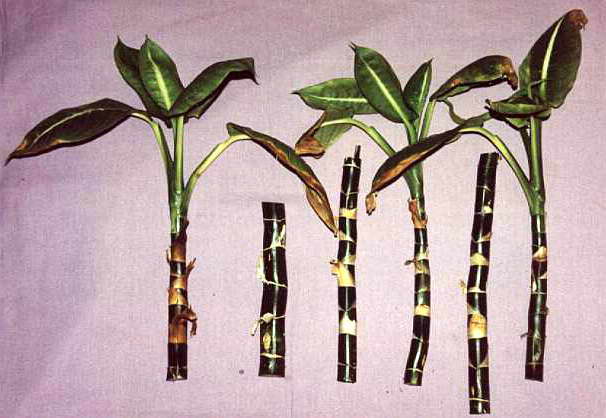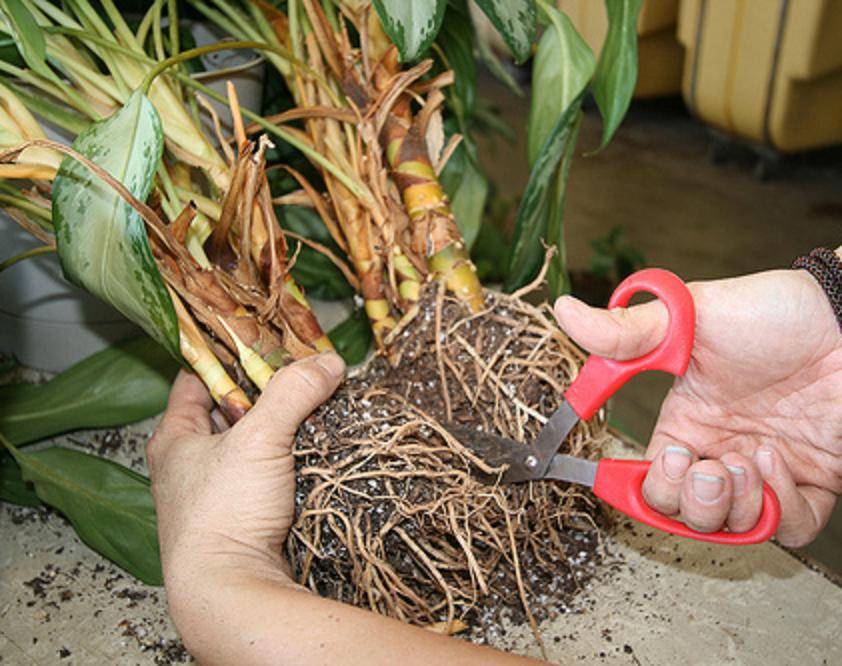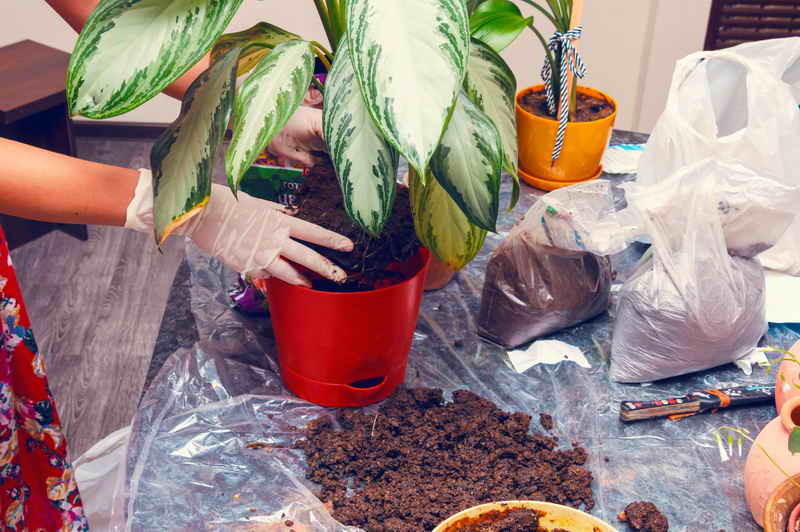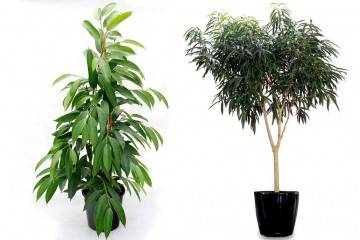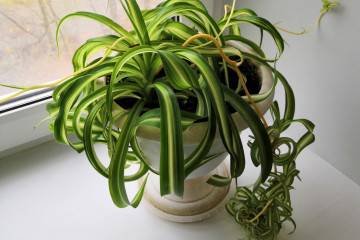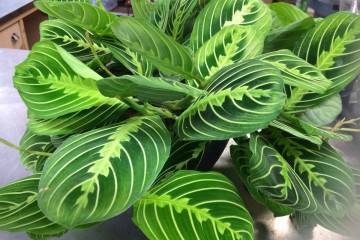Aglaonema flower - home care
Content:
Among the many well-known indoor plants, the amazing beauty of the foliage, the unusual appearance, as well as the variety of varieties, the aglaonema stands out. For such an unpretentious flower as aglaonema, home care will not be difficult. It is these features that made it very popular among flower growers.
Description and varieties of aglaonema
Aglaonema (aglaonema) is a houseplant, which is a representative of the Aroid family (Aronnikovs). Originally from Southeast Asia, where in its natural environment it mainly grows in rainforests on the islands of the Pacific and Indian oceans, in India, the Philippines, and Malaysia.
Aglaonema got its name by combining two Greek words aglaia - "shine" and nema - "stamen". For the most part, these are low bushy plants with oval oblong leaves with a wide variety of shades. The stem can be straight or horizontal, densely planted with pointed, spear-shaped leaves.
Popular varieties
A fairly large number of species of aglaonema are known. The most common:
- Aglaonema humble or moderate - the easiest aglaonema to care for. Unlike other representatives of this species, it has leaves of a solid green color, therefore it does not require a lot of sunlight. Its height is up to 50 cm, the leaves are pointed at the end of 15-20 cm long.
- Aglaonema ribbed is a low-growing bush with a stem branching at the base. Elongated leaves are green in color with varying degrees of saturation and different shapes, white spots and strokes.
- Aglaonema is volatile or changeable - the most commonly sold cultivar. The stem of the flower is straight, but with age it becomes lodging, up to 50 cm in height. The leaves are green or light green oblong in shape with a wide variety of patterns in darker or paler shades and a convex central vein.
- Aglaonema Pattaya Beauty - has straight tall stems and large leaves. The edges of the leaves are pronounced, green, and the middle with a lighter, grayish tint. With age, the leaves become darker in color and fall off from below, which makes the plant look like a palm tree.
- Aglaonema Maria is a bush with lush emerald green foliage. In the middle, the leaves have lighter, oblong veins. It reaches a height of up to 30 cm. There is another variety of Aglaonem Maria Christina.
- Aglaonema Crete is a tall species up to 70 cm with variegated leaves. The foliage of this variety has an exquisite color with various shades of pink, red, green and various combinations.
Aglaonema has useful properties: it saturates the air with oxygen and produces phytoncides that purify the air from pathogens, as well as from substances harmful to humans.
All plants of the Aroid family contain a small amount of calcium oxalate in the leaf juice. This poisonous substance is dangerous only in case of special susceptibility. Aglaonema is no exception, so don't forget about safety.
History of appearance
The history of home breeding of aglaonema began in the 60s - 70s of the last century, and now it is one of the most interesting and popular indoor plants. Once they got to American breeders, specimens of the aglaonema flower became the basis for their work, in the process of which many common varieties and hybrids were created, adapted to indoor conditions. By the end of the twentieth century, there were already about 50 different species of this flower.
Features of growing aglaonema at home
This plant does not require complex care, however, it is still worth following some rules.
Temperature
As a representative of the tropical range, the plant loves warmth. In summer, for normal growth and development, an air temperature of 21 ° to 26 ° C is needed, and in winter it is necessary to maintain 18-20 ° C indoors.
Avoid:
- cold drafts from balconies and windows;
- hot air from heating appliances;
- sudden changes in temperature.
In cool rooms, plants show slower growth, and in hot conditions, the growth rate is much higher and the color of the leaves is brighter and richer.
Lighting
Despite the fact that aglaonems are considered shade-loving plants, the presence of diffused light is important for the bright color of the leaves. But still, they often suffer from an excess of light, and not from a lack of it. Therefore, they need to change the lighting: in summer, flower pots are shaded to avoid direct sunlight, and in winter, on the contrary, artificial light is added.
Watering
Proper watering is very important in caring for aglaonema. The intensity of soil moisture depends on the temperature in the house: the lower it is, the less often the need for watering. At low temperatures, excessively moist soil can lead to root rot. For watering, the water must be allowed to settle and warm up.
Humidity and spraying
Aglaonem needs to be periodically sprayed and washed with warm water. This removes dust from the plant, increases air humidity, and protects against pests. You should not use products to give shine to the leaves.
Priming
The main requirements when choosing a soil for aglaonema: it should be light, not too dense, and have high air and water permeability. In this case, the soil should not retain a large amount of moisture. The best soil option is to mix leafy soil, sand, and peat (2: 1: 1). You can also add charcoal, perlite.
Top dressing
The plant should be fed during the period of growth and flowering quite often, 2 times a month, using special organic and mineral fertilizers. In winter, the flower does not need fertilization.
How aglaonema blooms
Aglaonema blooms are easy to achieve with proper care. In the natural environment, its flowering occurs in June-August, and in indoor conditions, it can bloom from early spring to late autumn.
The Aglaonema flower is not particularly beautiful. Flowering is represented by small white flowers that form inflorescences in the form of cobs, wrapped in a green or whitish blanket, located on the extended arrow.
With self-pollination of flowers, fruits - red berries - ripen in their place within a month. The seeds from the fruits of the aglaonema can be used to propagate the flower.
Reproduction of aglaonema
Aglaonema can multiply at home in 4 ways.
Cuttings
For reproduction, cuttings are taken from 3 to 10 cm long. Cuttings can be separated from the top of the bush, from the side shoots, or use a cut of a bare stem with growth points. If there is a leaf on the handle, this will increase the chances of rooting it.
Places of cuts are sprinkled with charcoal and left to dry for a day. Then placed in moist soil to the point of growth or leaf. It is necessary to constantly maintain a warm temperature, for this you can use a plastic bag, but do not forget to air it once a day.
With normal humidity and warmth, the roots should appear in about a month. It is advisable to carry out cuttings during the warm season.
By dividing
Reproduction of aglaonema in this way allows you to quickly get a new viable flower specimen. For this, an adult overgrown plant is taken and well-rooted shoots are separated from it.
The plant that has been separated must be immediately planted in prepared moist soil and placed in a warm place for 7-10 days. It is necessary to spray it periodically. After a new young leaf appears on the flower, which indicates its good rooting, you can safely rearrange the pot to a permanent place.
Seeds
Obtaining new plants from seeds is the longest and most laborious way of aglaonema propagation. It is necessary that the seeds are fully ripe, separate from the fruit easily at the slightest touch.
They need to be planted immediately after collection or purchase; during storage, the quality of the seeds deteriorates. For planting, flat low pots or boxes with loose, moist soil are used. The seeds are planted at a shallow depth of about 1.5 cm, after which the containers are covered with glass or film and placed in a warm, dark place.
The soil with seeds should be regularly irrigated with a spray bottle and do not forget to ventilate so that the seeds do not become moldy. The first shoots, depending on the conditions, may appear within 1 month, or even after 3 months. When 2-3 leaves appear, flowers can be planted in separate pots.
Air layering
Aglaonema can be propagated using air layers, but this method is used very rarely. To do this, select the required stem, make several cuts on it. Places of the incision should be overlaid with moistened moss and wrapped in opaque cellophane. Tighten the stem in the wrapped places with threads.
As soon as the roots appear, the unnecessary part of the stem is cut off, the cellophane is removed, and the layers, along with the moss, are planted in pots with prepared soil.
Everything you need to know about Aglaonema transplant
A feature of aglaonema is that young flowers grow quite quickly, and as the plant matures, its growth rate slows down. Therefore, young aglaonema need an annual transplant. But adult plants feel great in a cramped container and need to be transplanted as needed, on average, once every 3-5 years.
The best time to transplant aglaonema is spring. The plant, together with the old soil, is transplanted into a larger pot. Often, in the process of transplantation, aglaonema multiplies, separating small processes.
It is very important to choose the right pot to transplant the flower into. For aglaonema with its shallow root system, a wide, shallow pot is best. Also, it should not be very voluminous. The larger the capacity, the longer the roots of the flower are entwined with a soil ball, and this slows down its growth and development.
Difficulty in care and illness
If the conditions for keeping the aglaonema correspond to the norm, then its foliage is bright, juicy, shiny. However, if some dark or yellow spots appear on the leaves, or they generally change their color, then it is worth worrying.
What you should pay attention to:
- At low temperatures in the room and drafts, the leaves of the plant curl and begin to darken.
- When exposed to direct sunlight, leaves may burn, then they turn pale and become covered with yellow spots.
- When watering aglaonema with cold, chlorinated or hard water, its leaves begin to turn yellow.
- With excessive dryness or humidity, the leaves wrinkle and the tips begin to dry.
- With a lack of nutrients, the leaves of the plant become smaller.
- With excessively moist soil, the leaves of the aglaonema turn yellow and begin to wither.
- Falling of the lower leaves is a natural symptom of plant aging.
Any changes in the appearance of the leaves can be caused by infection of the flower by pests or other diseases. It is necessary to periodically carefully examine the leaves of the aglaonema in order to timely notice the appearance of pests and to carry out treatment.
How to act if pests are found on the plant:
- If the leaves of the plant are twisted and covered with thin threads from below, then a spider mite has settled on it. It is very dangerous, as it sucks the juices from the plant and slows down its growth. It is necessary to spray the flower with special means (Aktar, Pegasus, Decis).
- When aphids or thrips appear on the leaves, you need to wash them with soapy water.
- When a plant is damaged by a scabbard, brown tubercles form on the leaves. It is necessary to treat the flower with Actellik solution.
- Over-watering can cause fungal infections such as gray mold or rust. Spraying with fungicidal preparations, as well as removing the affected areas of the flower or transplanting it, will help get rid of them.
Folk omens associated with aglaonema
Aglaonema is called a flower that brings good luck. Such a belief appeared after one person showed a dewdrop on a flower growing in his garden with a winning combination of numbers for a lottery ticket.
Also, this flower attracts prosperity to the house, success in all sorts of things. They say that if the aglaonema bloomed, this means that peace and comfort reign in the family, and happy times will come for all its inhabitants.
Knowing and observing all the rules for caring for aglaonema, flower growers can easily grow this flower in indoor conditions. And it will certainly become a wonderful decoration for any home or garden.



